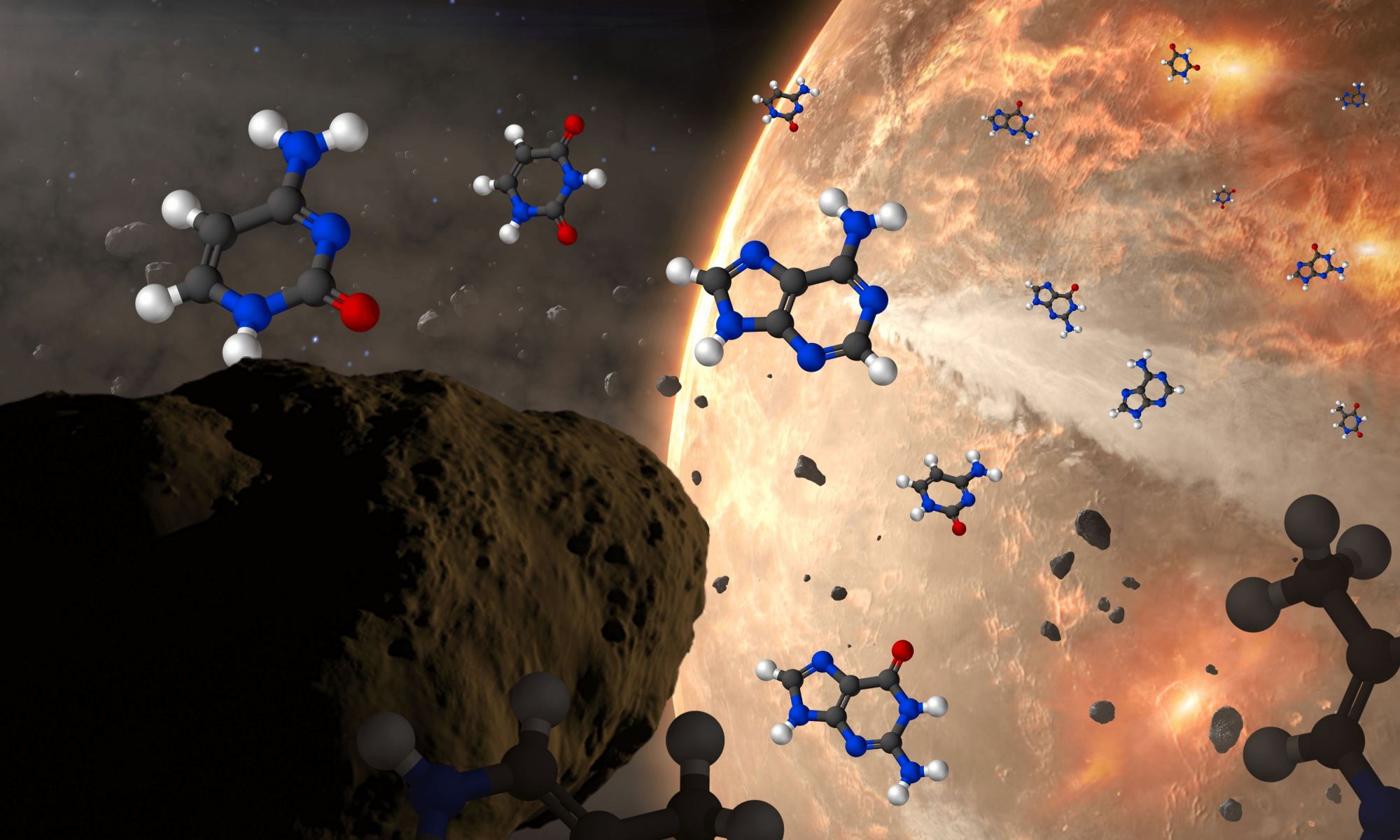On Earth, all life comes down to the polymeric molecules known as deoxyribonucleic acid (DNA) and ribonucleic acid (RNA). These two building blocks co
On Earth, all life comes down to the polymeric molecules known as deoxyribonucleic acid (DNA) and ribonucleic acid (RNA). These two building blocks contain all of the instructions for every living organism and its many operations. In turn, these are made up of five informational components (nucleobases), which are composed of organic molecules (purines and pyrimidines). For decades, scientists have been scouring meteorite samples for these building blocks.
To date, these efforts have resulted in the detection of three of the five nucleobases within meteorites. However, a recent analysis led by researchers from Hokkaido University, Japan (with support from NASA) has revealed the remaining two nucleobases that have eluded scientists until now. This discovery could help resolve the ongoing debate about whether life on Earth emerged on its own or was assisted by organic compounds deposited by meteorites (aka. panspermia).
The research team was led by Yasuhiro Oba, an associate professor at Hokkaido University’s Institute of Low Temperature Science (ILTS). He was joined by researchers from the Japan Agency for Marine-Earth Science and Technology (JAMSTEC), Tohoku University, Kyushu University, and the Solar System Exploration Division (SSED) at NASA’s Goddard Space Flight Center in Maryland. The paper that describes their findings recently appeared in the journal Nature Communications.
The five nucleobases that make DNA and RNA include adenine (A), cytosine (C), guanine (G), thymine (T), and uracil (U), with the bases A, G, C, and T found in DNA while A, G, C, and U are found in RNA. While scientists have found these bases in meteorites before, scientists are uncertain why more types haven’t been discovered so far. As Oba explained in a recent NASA press release:
“I wonder why purines and pyrimidines are exceptional in that they do not show structural diversity in carbonaceous meteorites unlike other classes of organic compounds such as amino acids and hydrocarbons. Since purines and pyrimidines can be synthesized in extraterrestrial environments, as has been demonstrated by our own study, one would expect to find a wide diversity of these organic molecules in meteorites.”
As Oda and his colleagues indicate in their study, this newly discovered pair of nucleobases (cytosine and thymine) may have eluded scientists because they degraded before they could be extracted (owing to their more delicate structure). In earlier experiments, scientists placed grains of meteorite samples in a solution of hot formic acid to extract nucleotides and create a solution (“meteorite tea”) that they would then analyze. As co-author Danny Glavin of NASA’s Goddard Space Flight Center explained:
“We now have evidence that the complete set of nucleobases used in life today could have been available on Earth when life emerged. We study these water extracts since they contain the good stuff, ancient organic molecules that could have been key building blocks for the origin of life on Earth.”
For the sake of their study, the team relied on a “cold brew” rather than a “hot tea” approach. This consisted of using cool water to extract the cytosine and thymine rather than formic acid – which may have destroyed them in previous studies. Second, the team employed more sensitive analytics than previous studies, allowing them to detect smaller amounts of molecules. This allowed the team to detect the fragile cytosine and thymine in their samples of meteorite tea.
While these findings effectively complete the nucleobases that make up all life on Earth, they have not settled the debate just yet. At present, scientists still cannot say for certain if life began in a prebiotic pond billions of years ago or was assisted by organic molecules from space. However, the detection of the remaining two nucleobases and other molecules found in the sample has provided some additional pieces of the puzzle.
For instance, the team detected traces of sugars and bases in the sample, indicating that more fundamental molecules of biology are found in space. Last, but not least, the team’s research has resulted in a new proof of concept technique that has proven more effective at extracting information from asteroids. This will come in handy when NASA’s OSIRIS-REx mission returns samples from the asteroid Bennu next year.
Fonte: Universetoday.com

